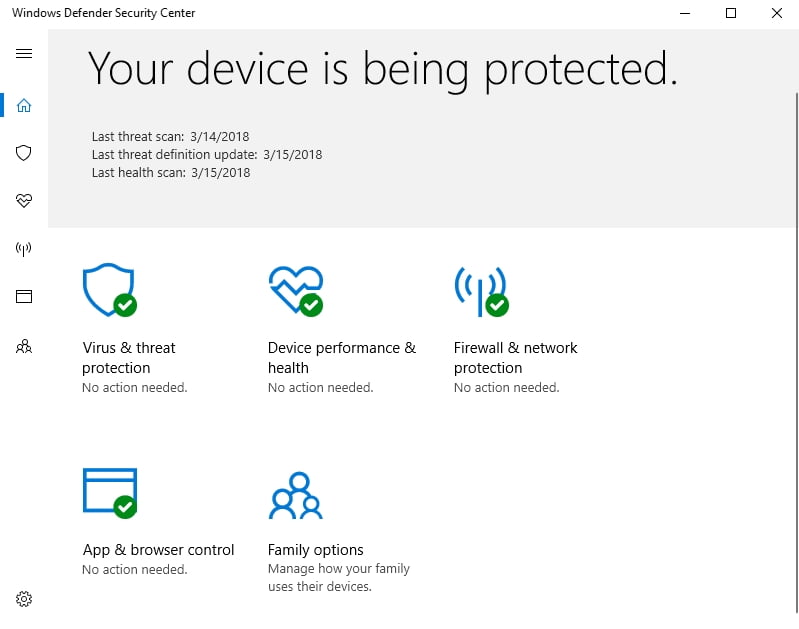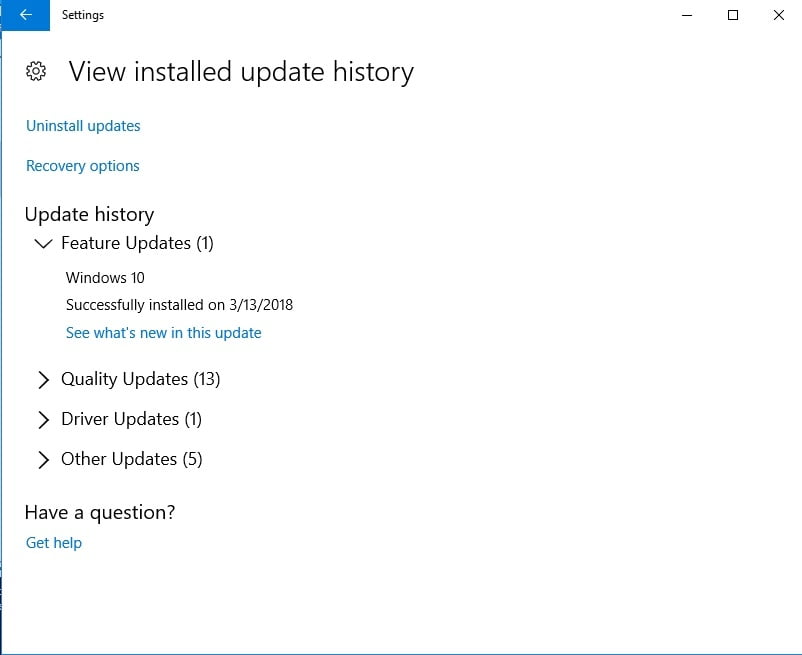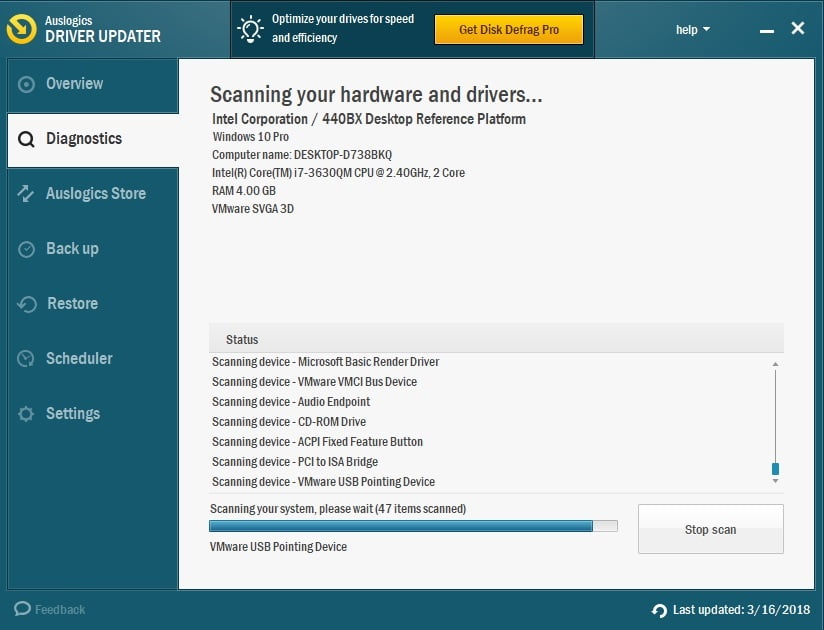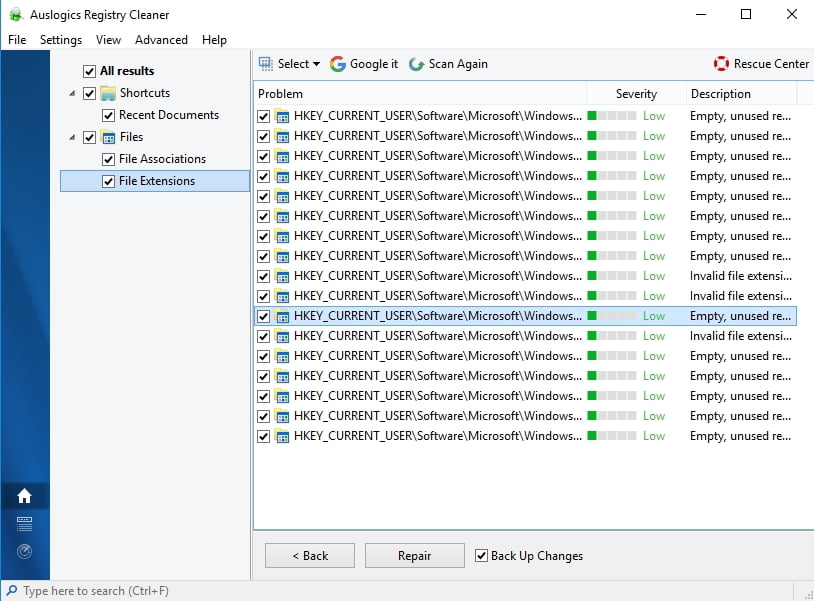- What does ‘Bad Pool Header’ mean?
- Why does the Bad Pool Header error come up?
- How to fix Bad Pool Header in Windows 10?
- 1. Unplug your external devices
- 2. Undo recent changes
- 3. Temporarily disable your third-party antivirus
- 4. Make use of Windows Update
- 5. Update your drivers
- 6. Check your disk
- 7. Diagnose your RAM
- 8. Disable Indexing Service / Windows Search
- 9. Perform a clean boot
- 10. Clean Windows Registry
- 11. Use System Restore
- 12. Run a complete system checkup
- 13. Reset your PC
- 14. Perform a clean Windows install

‘The root of oppression is the loss of memory’
Paula Gunn Allen
The BAD_POOL_HEADER error (the “0x00000019” code) is one of those scary blue screen of death (BSOD) issues that can give you the creeps and force you to think that your computer is all but at death’s door. The good news is, it isn’t, as the problem in question is proven to be pretty fixable. Just read on to find out how to resolve Bad Pool Header in Windows 10.
What does ‘Bad Pool Header’ mean?
Let’s make this error message (x00000019) a bit more meaningful by analyzing its anatomy. ‘Pool’ is actually the memory pool your OS uses to allocate memory. The ‘Header’ part ensures that the Windows API (application programming interface) is properly addressed. As such, the BAD_POOL_HEADER error message signifies your PC is having memory management issues.
Why does the Bad Pool Header error come up?
The issue in question appears when the memory pool becomes corrupt. The most common reasons for this adversity are driver issues, disk-related problems, RAM malfunction, software conflicts, and hardware failure. In this article, we will provide fixes for all of them.
How to fix Bad Pool Header in Windows 10?
The issue in question is extremely annoying: it makes your system crash, causes you to lose your progress and leads to permanent data loss, which, in fact, is a huge spanner in the works. A long story short, you should fix that poor ‘pool’ thing to make your OS usable again.
Here our top 14 tips on how to resolve Bad Pool Header in Windows 10:
- Unplug your external devices
- Undo recent changes
- Temporarily disable your third-party antivirus
- Make use of Windows Update
- Update your drivers
- Check your disk
- Diagnose your RAM
- Disable Indexing Service / Windows Search
- Perform a clean boot
- Clean Windows Registry
- Use System Restore
- Run a complete system checkup
- Reset your PC
- Perform a clean Windows install
One of them is sure to work for you:
1. Unplug your external devices
The first fix to be carried out implies disconnecting all your external pieces of hardware: any USB hubs, flash drives, external hard drives, webcams, etc. should be removed. Then check if the issue in question has been resolved.
2. Undo recent changes
Now it is time for you to take a few steps back. For example,
- remove newly installed hardware and software;
- revert recent system changes;
- uninstall the latest updates.
To sum up, you should undo any changes that you think might be responsible for the current memory malfunction.
3. Temporarily disable your third-party antivirus
The point is, your non-Microsoft security solution might be in conflict with your Windows 10. Thus, feel free to disable it to check if it is the culprit.
Note: There is no need to worry about your Win 10 PC’s safety, as it has the built-in Windows Defender guard to keep malware at bay if you have no other antivirus software installed:
Settings -> Update & Security -> Windows Defender

4. Make use of Windows Update
If the BAD_POOL_HEADER error persists, you should pay your Windows Update a visit, as your OS might be sitting on updates. Here is how you can install them:
Start -> Settings -> Update & security -> Windows Update -> Update Status

5. Update your drivers
Out-of-date drivers are certainly not an issue to turn a blind eye to: they make your OS turbulent and bring about various mishaps, such as BAD_POOL_HEADER.
Here are 3 easy ways to update your drivers in Windows 10:
Utilize Device Manager
Your OS is quite a resourceful thing: for instance, it has an embedded tool named Device Manager able to fix your driver issues automatically. Just follow the instructions below to let it do its job:
- Win + X -> Device Manager
- Select the device which driver is out of date and right-click on it -> Select the Update driver option
Update your drivers yourself
You can always do it ‘your way’: browse the net for the latest driver software for your device models and install it on your PC.
Use a special tool
If you do not have time to update your drivers one by one, you can get them all in tip-top shape by clicking a single button – Auslogics Driver Updater makes things easier.

6. Check your disk
If the fixes above have been to no avail, you should thoroughly examine your hard disk – it might be having issues.
Here is how to do that in Windows 10:
- Windows Key + S -> Type ‘cmd’ (without quotes) -> Run your Command Prompt as an administrator
- Type ‘chkdsk.exe /f /r’ (without quotes) -> Enter -> Type Y
- Save your work and close your apps -> Restart your PC
- You disk will be scanned for errors -> They will be repaired if present
7. Diagnose your RAM
The creepy BAD_POOL_HEADER error might mean your Random Access Memory (RAM) is playing up.
To test your RAM for issues in Windows 10, follow the instructions below:
- Press Windows logo key and R simultaneously -> Type ‘mdsched.exe’ (without quotes) -> Press Enter
- ‘Restart now and check for problems (recommended) -> The RAM test will be conducted (You can’t use your PC while the test is being performed)
- Your PC will restart -> Right-click on your Start button -> Select Event Viewer
- Search for Windows Logs -> System -> Find
- Type ‘MemoryDiagnostic’ (without quotes) into the Find box -> Find Next -> You will be presented with the memory diagnostics results
8. Disable Indexing Service / Windows Search
Try turning off the indexing service on your PC to fix the BAD_POOL_HEADER problem.
Take a few steps below to check if this method works:
- Windows logo key + R -> Type ‘services.msc’ (without quotes) into the Run box
- Double-click on Indexing service or Windows Search
- Change its startup type to Disabled or Manual
9. Perform a clean boot
Clean booting your Windows 10 may help to repair your Bad Pool Header.
To perform a clean boot, do the following:
- Windows logo key + S -> Type ‘msconfig’ (no quotes) into the Search box -> Press Enter
- General -> Selective startup -> Clear the Load startup items box
- Go to the Services tab -> Disable all the items in the Hide all Microsoft services box
- Click OK to save your changes -> Restart your PC
See if the BSOD Bad Pool Header problem is present. If it isn’t, the issue in question was caused by one of the disabled programs or services. Enable them one at a time to locate the culprit.
10. Clean Windows Registry
The Bad Pool Header screen might signify that your registry is corrupt and needs fixing. Please keep in mind that editing it is a procedure to carry out only by an advanced user. The thing is, you may damage your system beyond repair. Thereupon, we strongly advise you to use special software for the purpose of modifying your Windows Registry. To get it in tip-top shape, employ Auslogics Registry Cleaner, which is a 100 % free tool that is totally safe to use and gives you full control of the process.

11. Use System Restore
If the System Restore feature is enabled on your PC, you can configure your system to an earlier state. This trick will get your Win 10 back to the days when there was no BAD_POOL_HEADER to mess things up.
Here is how you can use System Restore to your advantage:
- Go to your Start menu -> Enter your Control Panel -> Go to the System and Security section
- Select File History -> Go to Recovery -> Select Open System Restore -> Click Next
- Select the restore point you to which you wish to roll your PC back -> Click Next -> Finish -> Provide your confirmation
12. Run a complete system checkup
If none of the fixes above has saved your day, you should scan your system for junk, corrupt or missing system files, incorrect settings, and other issues that can affect its running – this kind of crusade may rid you of the persistent Bad Pool Header error.
To tell the truth, it requires a lot of time and effort to examine your computer in a thorough and comprehensive way, so you have to learn some patience. Or you can use an acknowledged tool to get the work done. For example, Auslogics BoostSpeed will leave no stone unturned to examine every nook and cranny of your OS and improve its performance.
13. Reset your PC
Your OS might need a fresh start to overcome the Bad Pool Header challenge.
Here is how you can perform the necessary manoeuvre, using the built-in reset options in Win 10:
- Start -> Go to the Settings section -> Move to Update & security
- Navigate to Reset this PC option -> Get started
- Then you can choose to keep your files, to remove everything, or to restore factory settings.
Bear in mind that the last two options imply wiping your files off your PC, which means you should back up your important data beforehand. In fact, there are many backup options available for you: for example, you can utilize a cloud solution or a portable storage device. Besides, you can use Auslogics BitReplica, which is a special program that can shoulder the responsibility of keeping your files safe and secure.
14. Perform a clean Windows install
No luck so far? Then clean installing your OS seems to be your last resort. In a situation like this, you can choose the above-mentioned ‘Remove everything’ option or install your Windows from scratch by using installation media.
We hope your Windows 10 memory issues has gone for good.
Do you have any ideas or questions regarding this issue?
We are looking forward to your comments!





 Done! Great to see you among our subscribers!
Done! Great to see you among our subscribers!